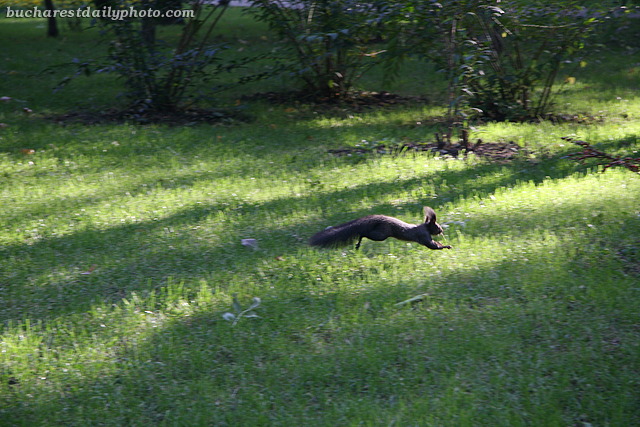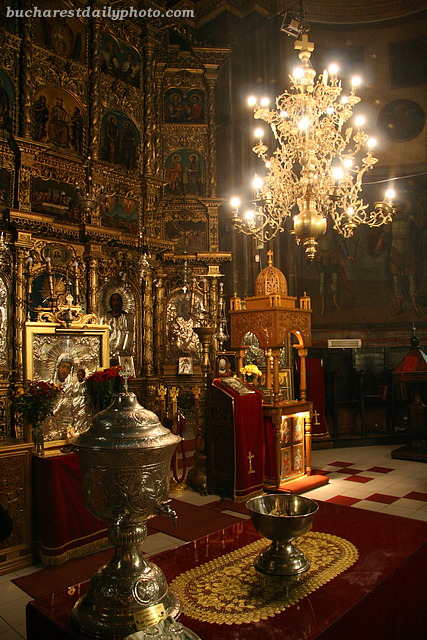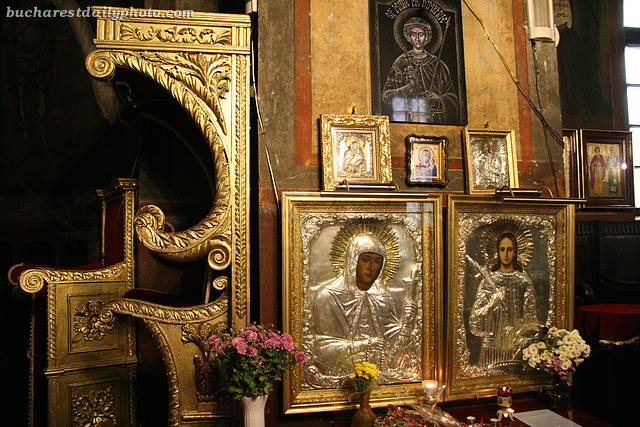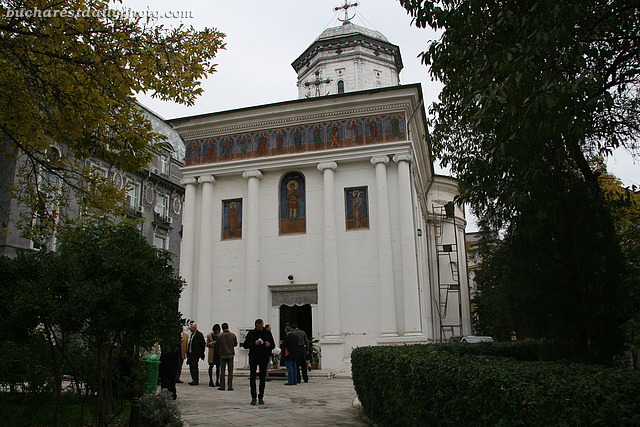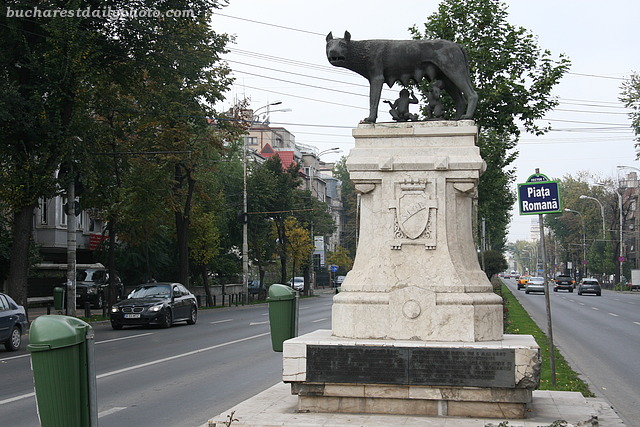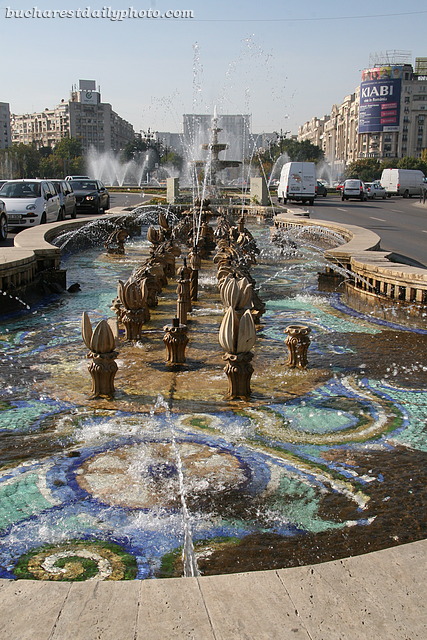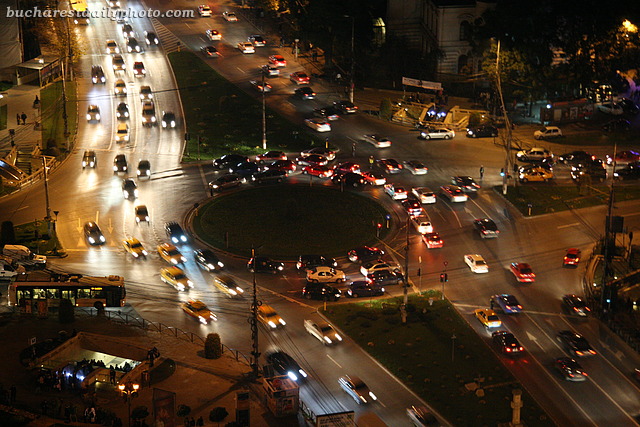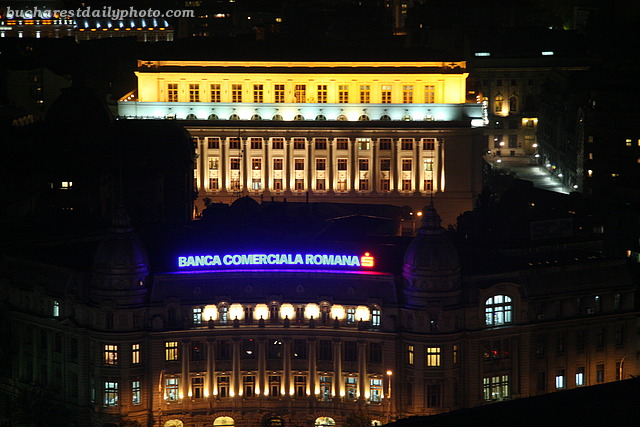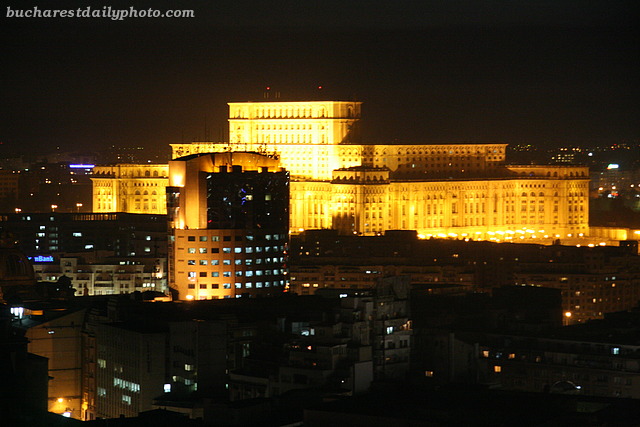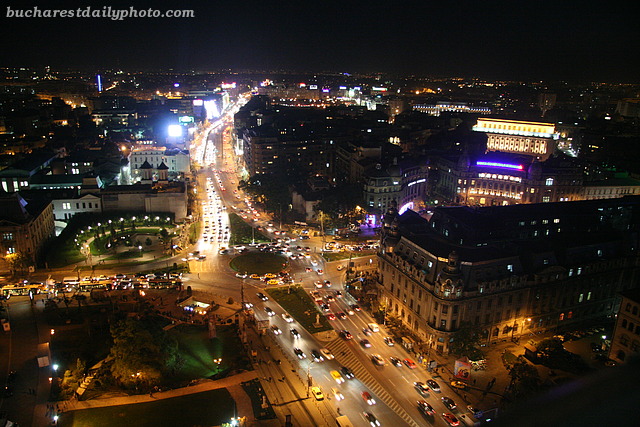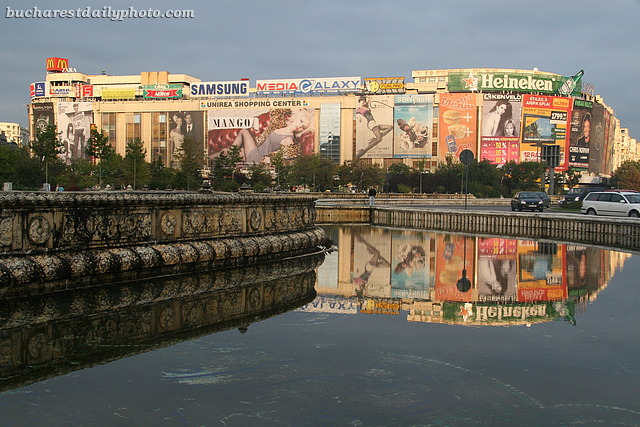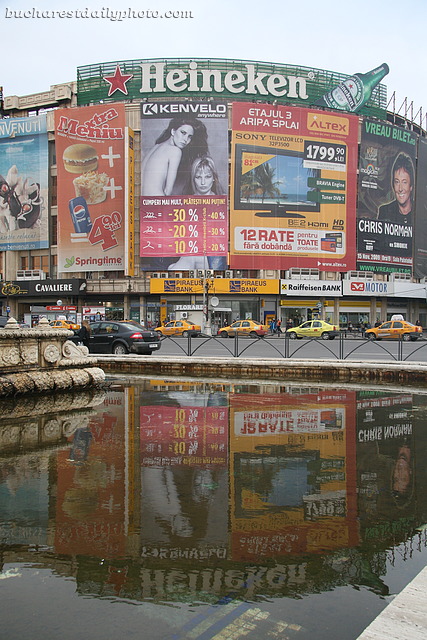Something fun, fit for a Saturday …
I don’t know why but it’s rare to see squirrels in Bucharest’s parks. So I was surprised when I was able to spot one in Kiseleff park last week. The photograph is a bit unclear because the squirrel was moving continuously and the lighting conditions were not the best.
I don’t like to take pictures inside churches because there’s always someone praying and I feel like intruding. But being at the church with the occasion of a baptizing I waited until everyone left and snapped a few quick shots. I don’t know if you had the occasion of visiting a Eastern Orthodox Church before, but what you see in today’s photographs is a pretty typical interior. Icons are not considered to be idols or objects of worship by the Eastern Orthodox, the thinking being that an icon is like a window and that is not the physical object that is venerated but rather the individual shown. Therefore orthodox churches have many icons adorning the walls, in fact many of them are completely covered in icons or frescoes. Also, as you can see in the second photograph, icons are often illuminated by a candle or oil lamp.
Last Sunday I was invited to a baptizing at this charming church that goes by the name of Saint Dumitru Church, also called “of Oath Taking” because in the 17th century the parts involved in a trial would come here and take an oath to tell the truth while wearing the Holy Belt of the Virgin Mary. It is also called “Saint Dumitru at the Post Office”, because of its location, and in the past it used to be called “Saint Dumitru of Badea Bălăceanu”, after the name of one of the first patrons of the church. Although it is located in Bucharest’s Old Town, this church is far less popular than its close neighbour Stavropoleous Church.
This peaceful looking church has quite a stormy history. You can skip this part if you’re not interested. I won’t tell 
I guess most of you are familiar with the famous statue of the Capitoline Wolf, the symbol of the founding of Rome. The statue depicts the twin brothers Romulus and Remus suckling on a she wolf. The original sits in Museo Nuovo in the Palazzo dei Conservatori on Rome’s Campidoglio. There is still a debate going on regarding its attribution and dating. I can’t help the debate regarding the origin of Rome’s Capitoline Wolf, but I think I can tell you where Bucharest’s She Wolf (Lupoaica in Romanian) came from. This statue was a gift from the city of Rome given to Bucharest in 1906 with the occasion of the “General Exhibition of Romania” (also named “Jubilee National Exhibition”) which marked three events: 40 years since the crowning of King Carol I as the ruler of Romania, 25 years since the Proclamation of Independence by the Romanian Kingdom, and 1,800 years since the emperor Trajan’s colonization of Dacia (current day Romania) in 106. The exhibition, modelled after the World Fair that took place in Paris in 1900, was located in Carol I Park and was intended to show the progresses made by Romania in different areas: politics, culture etc. The statue was first displayed at the Roman Arenas in Carol Park. After this short moment of glory, the poor She Wolf was moved from one place to another, all around Bucharest. From the Roman Arenas the statue was taken to St. George Square (Piaţa Sfântul Gheorghe in Romanian) only to be relocated again on the Metropolitan Church Hill in 1931. While there, she was the reason of a little controversy because some inventive mind came up with the idea that the She Wolf has its back to the altar, being totally impolite in that regard. So in 1965 it was moved again to a little park in the Dorobanţi Square. Finally, in 1997 it was brought to its current location, a corner of the Roman Square (Piaţa Romană in Romanian) in downtown Bucharest. But the story doesn’t end here. To top it all off, the mayor of Bucharest announced a few months ago – among some protests – that he is thinking of moving it again by the end of the year, this time close to its original location in St. George Square. But so far the She Wolf still sits in the Roman Square, watching patiently the nightmarish traffic of Bucharest and probably staring at the huge Coca Cola bottle that’s been dominating the square for the last two years.
And since I talked about them last week, here’s one more Union Square fountain shot. This will be the last one in the fountain series. I promise to move on to a new subject tomorrow. If you look closely at the picture you can spot the Palace of Parliament in the background.
And last but not least, and I promise to move on tomorrow 
The series with Bucharest’s night shots continues with a photo of two banks: in the foreground we see the Romanian Commercial Bank, the largest bank in Romania, and in the background the National Bank of Romania, which is the the central bank of the country, the one that controls the exchange and the interest rates, supervises the credit institutions and issues the local currency, banknotes and coins.
For today the (in)famous Palace of Parliament looming over the city’s skyline. The building that partially blocks the view is the tower of Bucharest Financial Plaza.
Yesterday I took some nightly photos of Bucharest and I will be bombarding you with them the next few days. For today we have the roundabout at the University Square.
In today’s picture we have the Unirea Shopping Center that I mentioned in my yesterday’s post. It was built in 1977, during the communist regime. I tried to remember when was the last time that I saw the facade of this building but I can’t remember. What I can tell you is that for a long time it’s been covered by these huge advertisement panels. And since we have no choice but to cope with this visual pollution, I thought I’ll have some fun with it and took these reflection photos. The building is reflecting in the fountains that I also mentioned yesterday, which as you can see are in dire need of a cleaning.
